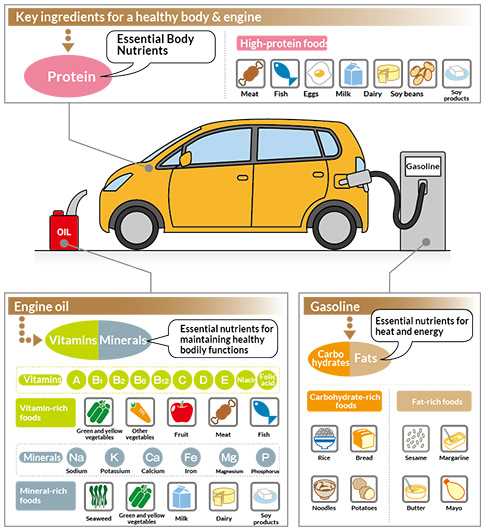Minerals, Nutrients & Phytochemicals: Why Are They Good For Athletes?
A mineral is a naturally occurring substance that is solid and inorganic representable by a chemical formula, usually a biogenic, and has an ordered atomic structure. It is different from a rock, which can be an aggregate of minerals or non-minerals and does not have a specific chemical composition.
Nutrients are the nutritional components in foods that an organism utilizes to survive and grow. Macronutrients provide the bulk energy for an organism's metabolic system to function, while micronutrients provide the necessary cofactors for metabolism to be carried out. Both types of nutrients can be acquired from the environment.[1]
They are used to build and repair tissues, regulate body processes, and are converted to and used for energy. Methods for nutrient intake are different for plants and animals. Plants take in nutrients directly from the soil through their roots and from the atmosphere through their leaves. Animals and protists have specialized digestive systems that work to break down macronutrients for energy and utilize micronutrients to carry out both metabolism and anabolism or constructive synthesis in the body.

Organic macronutrients include carbohydrates, *fats, proteins (or their building blocks, amino acids). Inorganic chemical compounds such as dietary minerals, vitamins. water, and oxygen may also be considered nutrients.[2]
Inorganic minerals converted to organic minerals forms, also known as mineral chelates, can also be considered organic nutrients as they are higher in absorption and bioavailable efficiency.
*Good fat sources are found in plants and fish however, a word of caution needs to be shared in regard to Mercury found in fish.
It is an essential nutrient if it must be obtained from an external source, either because the organism cannot synthesize it or produces insufficient quantities. Nutrients needed in very small amounts are micronutrients and those that are needed in larger quantities are called macronutrients. The effects of nutrients are dose-dependent and reduced levels in the body are called deficiencies.[3]
Phytochemicals are chemical compounds that occur naturally in plants (phyto means "plant" in Greek). Phytochemicals as candidate nutrients[edit]
Without specific knowledge of their cellular actions or mechanisms, phytochemicals have been considered possible drugs for millennia. For example, Hippocrates may have prescribed willow tree leaves to abate fever. Salicin, having anti-inflammatory and pain-relieving properties, was originally extracted from the bark of the white willow tree and later synthetically produced to become the staple, over-the-counter drug aspirin.[4][5]
Specific phytochemicals, such as fermentable dietary fibers, are allowed limited health claims by the US Food and Drug Administration (FDA).[1]
Some phytochemicals with physiological properties may be elements rather than complex organic molecules. For example, selenium, which is abundant in many fruits and vegetables, is a dietary mineral involved with major metabolic pathways, including thyroid hormone metabolism and immune function.[6] Particularly, it is an essential nutrient and cofactor for the enzymatic synthesis of glutathione, an endogenous antioxidant.[7]
Click the following for the latests recommended nutritional intake for men, women & children Dietary Guidelines:

